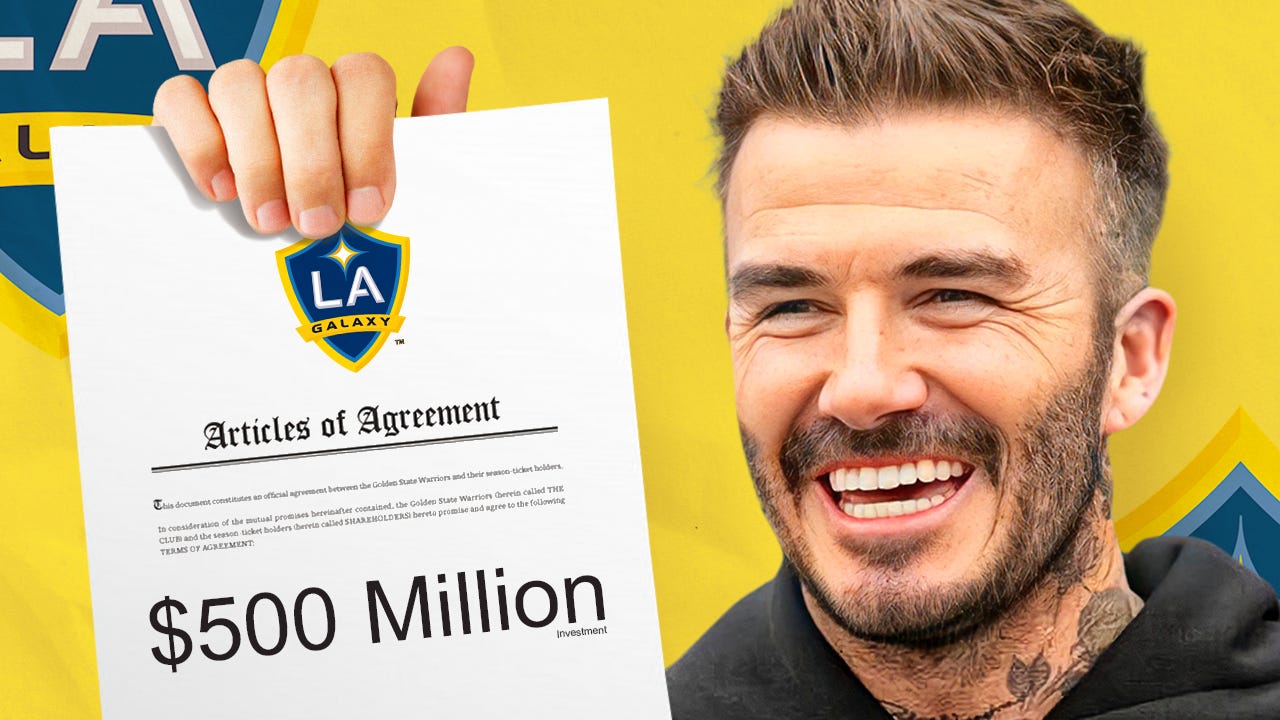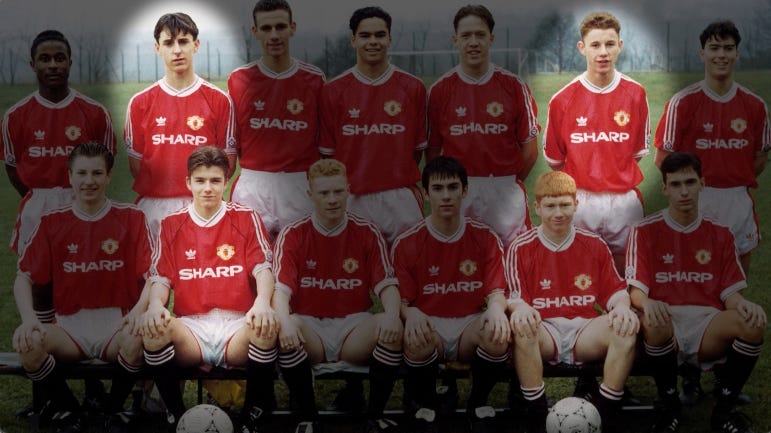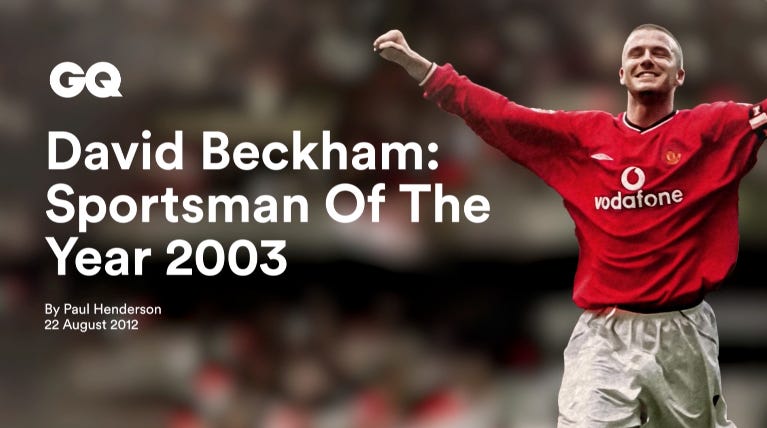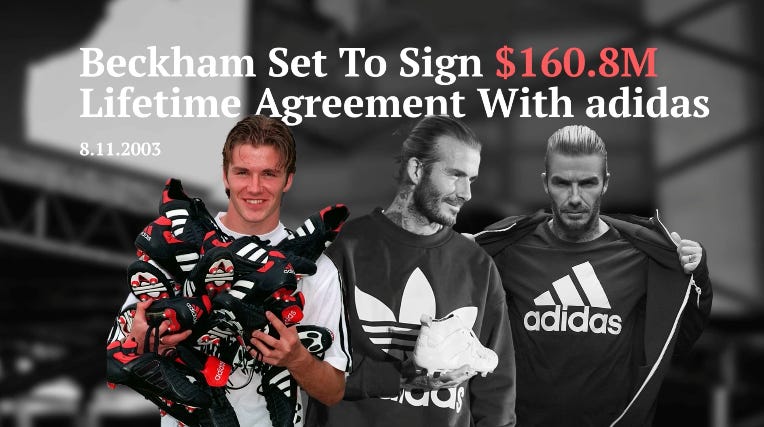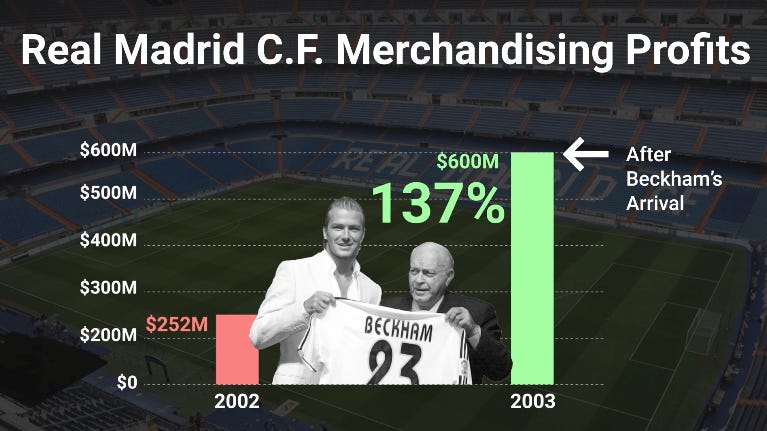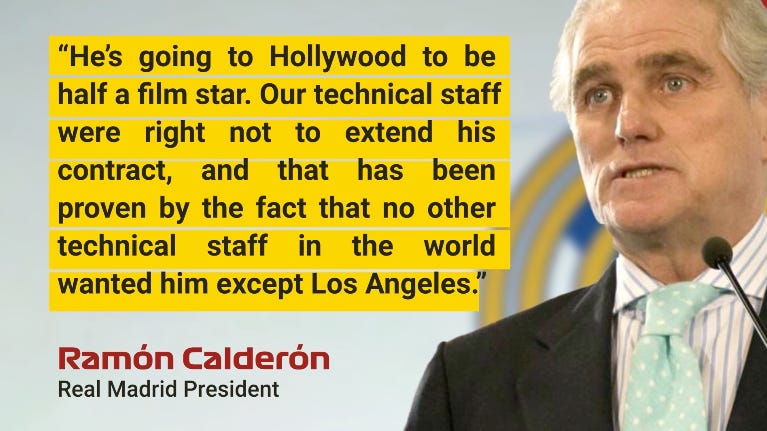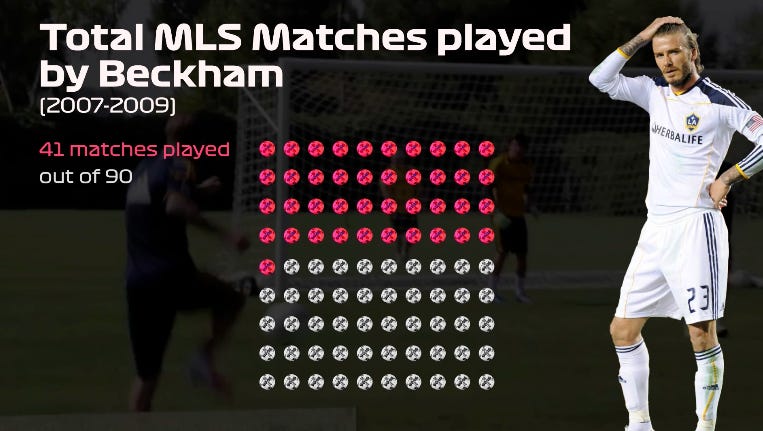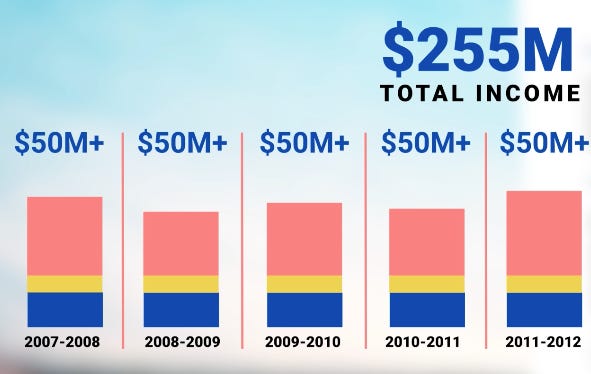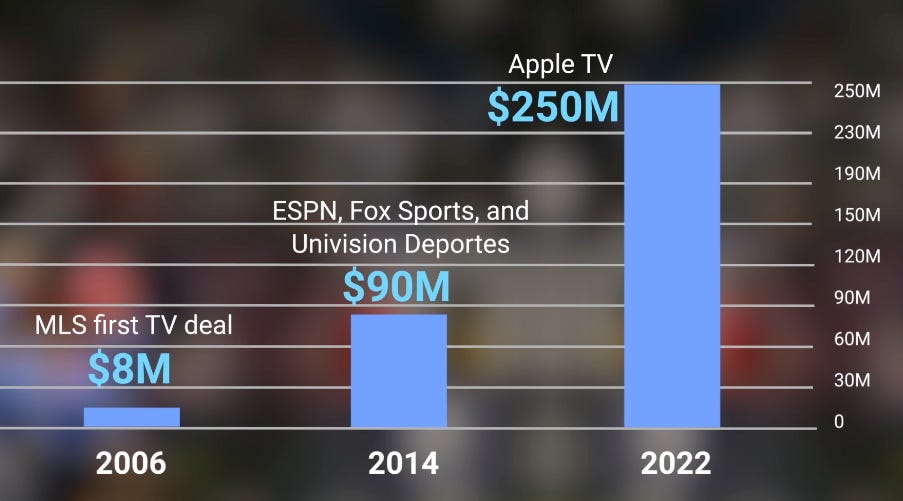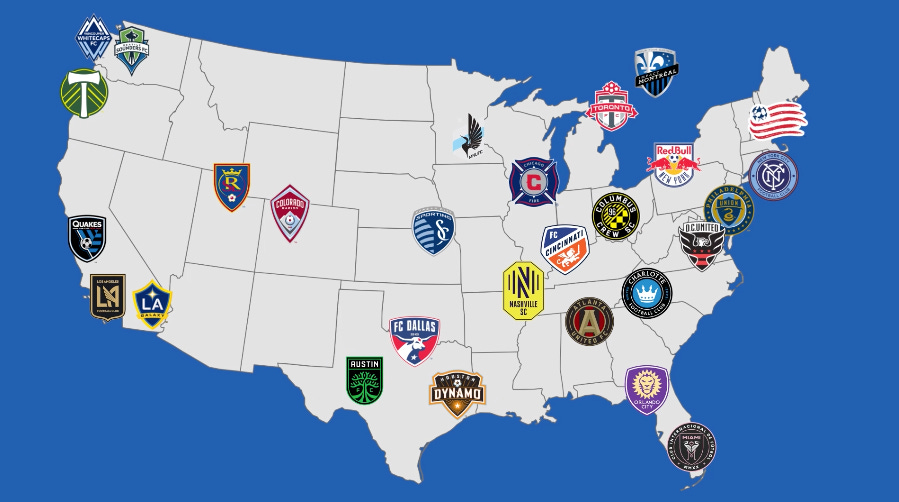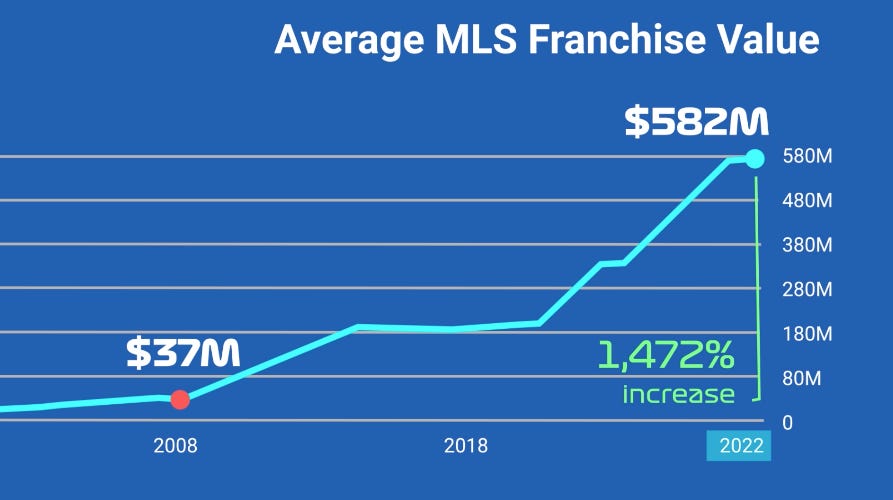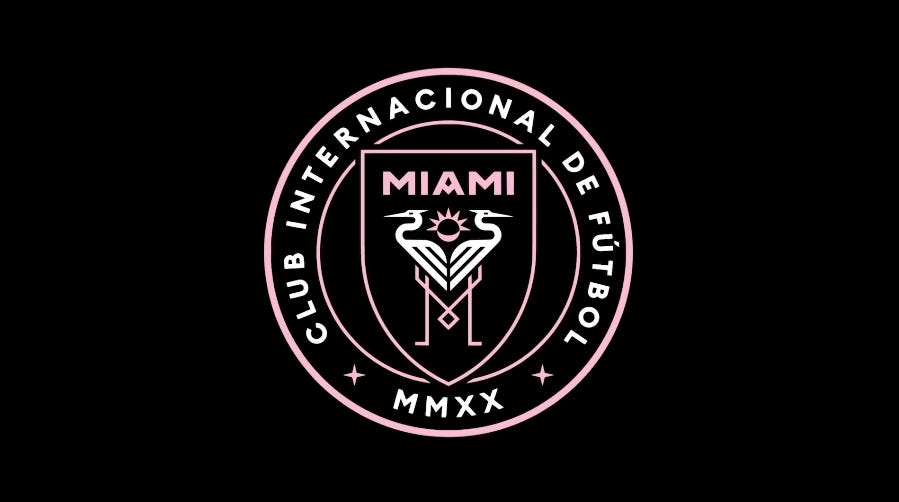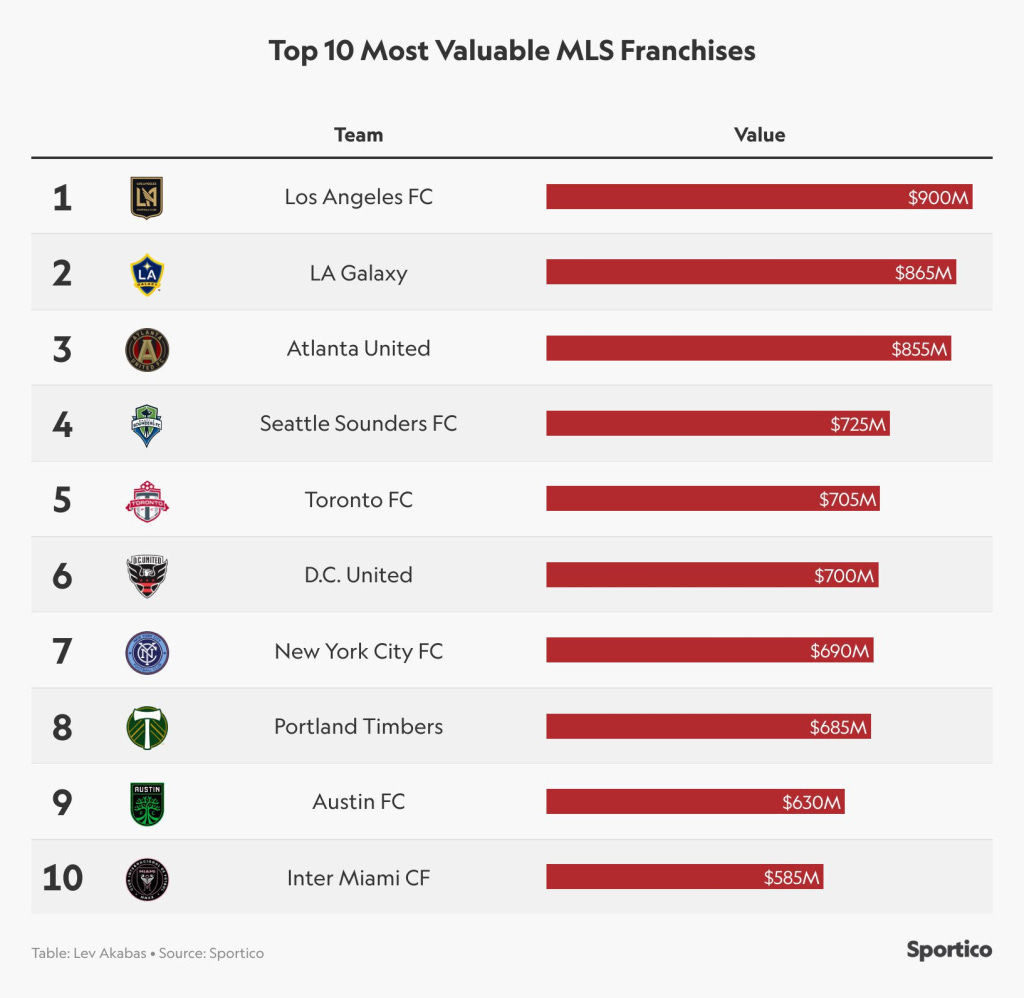The Hidden Details Behind David Beckham’s MLS Contract That Earned Him $500 Million
If you are not a subscriber of Huddle Up, join 76,000+ other professional athletes, business executives, and casual sports fans that receive it directly in their inbox — it’s free. Today At A Glance:David Beckham shocked the world when he left Real Madrid to join the LA Galaxy of Major League Soccer. He was just 31 years old and agreed to take a 70 percent pay cut. But here’s the part you probably didn’t know: Beckham’s MLS contract included two unique stipulations that eventually turned his $6.5 million annual salary into more than $500 million. It’s one of the most lucrative contracts in sports history, so today’s newsletter breaks down the details. Enjoy! This newsletter is also available on YouTube, Apple Podcasts, and Spotify. Today’s Newsletter Is Brought To You By Sorare!Sorare is one of the fastest-growing companies in sports. Backed by superstar athletes like Lionel Messi, Kylian Mbappé, Rudy Gobert, Aaron Judge, and Serena Williams, they have built blockchain technology that allows fans to collect officially licensed NFT-backed player cards. Sorare, which started in Europe with fantasy football games, recently launched exclusive licensing deals with the MLB/MLBPA and NBA/NBPA to create a custom fantasy game for each sport. The concept is simple: Sorare lets you buy, sell, trade, and earn digital trading cards of your favorite players. But rather than just looking at them as a digital collectible, you can use these trading cards to enter fantasy sports competitions for prizes & rewards. So use my link below for a free limited card — it’s free to get started! Friends, David Beckham is one of the world’s most influential athletes. He spent nearly two decades playing for Manchester United and Real Madrid. He is the 7th highest-earning athlete of all time, and he has more than 100 million followers across social media, despite none of the platforms existing during the height of his career. But on January 12, 2007, he shocked the world, leaving Real Madrid to sign a multi-year deal with the LA Galaxy of Major League Soccer (MLS). The move was heavily criticized by football pundits — why would Beckham, one of the greatest footballers ever, go to America? A country where only 2% of people said soccer was their favorite sport to watch? And why MLS? Soccer superstars played in European top flights like The Premier League, La Liga, and Bundesliga — not Major League Soccer. The league was essentially an afterthought for American sports fans. MLS averaged only 15,000 fans per game the year before, crowds nearly six times smaller than the 85,000 screaming fans in Madrid. And the league also averaged a meager 263,000 TV viewers in 2006 — a far cry from the millions averaged by American leagues like the NFL, NBA, and MLB. But the most puzzling part of Beckham’s move? The money. His $6.5 million annual salary with the LA Galaxy was a 70% pay cut from what he made at Real Madrid. And with a salary cap of just $2 million, it was unclear how the Los Angeles-based MLS club could even afford him. But Beckham saw the bigger picture — because the fine print of his deal had little-known incentives that would eventually turn his $6.5 million salary into more than $500 million. This is how David Beckham negotiated one of the greatest sports contracts of all time. Before we go into the groundbreaking LA Galaxy deal in 2007, it’s important to understand how David Beckham even arrived to MLS in the first place. Beckham was born on May 2, 1975, in East London, England. He comes from a working-class family — his father Ted was an appliance repairman and his mother Sandra was a hairdresser — and he possessed immense talent from a young age. For example, Beckham won the Bobby Charlton Soccer Schools National Skills Competition at just 11 years old, and English football legend Bobby Charlton himself called Beckham the most talented youth player he had ever seen. This captured the attention of Beckham’s favorite club, Manchester United. They offered Beckham the opportunity to train at Old Trafford, and at just 16 years old, Beckham packed his bags and left home to join their youth squad. The 1991 Manchester United youth team included future legends like David Beckham, Nicky Butt, Gary Neville, and Paul Scholes, and they were unstoppable, dominating everyone they faced en route to the Youth FA Cup. And Beckham impressed Manchester United *so much* that he ended up making his professional debut the following calendar year — at just 17 years old. Beckham’s arrival at Manchester United brought precision passing and trademark bending freekicks, and the Red Devils began to rule the Premier League. In Beckham’s nine seasons with Manchester United, the club won six Premier League titles, one Champions League crown, four English Super Cups, and an Intercontinental Cup. And Beckham quickly became a star — on and off the pitch. He was named captain of the England national football team. He married Victoria Adams, otherwise known to the world as “Posh Spice” of the popular music group Spice Girls, and he was voted as GQ’s Sportsman Of The Year in 2003. But later that year, Beckham officially secured his place as one of the world’s biggest stars. A bidding war broke out between powerhouse clubs Barcelona and Real Madrid, and Madrid ended up acquiring Beckham from Manchester United on a $50 million transfer. And to cap it all off, Beckham made history off the field also, becoming the first athlete ever to sign a lifetime contract with Adidas for a whopping $160 million. Beckham seemingly had it all — but the craziest part is, he was just getting started. Beckham’s four years at Real Madrid were full of ups and downs. The club won the Spanish Super Cup his first year in Madrid, but they failed to win a single La Liga title during Beckham’s first three seasons with the team, and they also cycled through six different managers during Beckham’s four seasons. But even with these struggles, Beckham-mania still ran wild. The club sold more than one million Beckham shirts within six months of his arrival, and Beckham was responsible for $600 million in merchandise sales across his four seasons at Real Madrid, contributing to a staggering 137% increase in club profits. This increase in merchandise sales is important to note. Because while Beckham started to deal with more injuries and took a slight step back in his play on the pitch, his commercial value to a football club was undeniable. So as his last season in Madrid wound down, Beckham was 31 years old and had an important decision to make: Continue playing in the top flights of European football or attempt to achieve true global superstardom by moving across the Atlantic to play in the world’s most lucrative sports market. And just a few months later, David Beckham announced his decision — he was coming to America. Beckham signed a 5-year, $32.5 million deal to join the LA Galaxy of Major League Soccer, and the move was met with immediate backlash. Many football critics obliterated the star for going to a league that was barely ten years old and had little talent compared to European leagues. Real Madrid’s president Ramón Calderón also ripped into Beckham, saying: But Beckham didn’t care. And he made it clear why he was moving across the pond — to grow the sport of soccer and build a global brand.
Still, even with his personal goals, the most obvious question on everyone’s mind was — why the hell would Beckham take a 70 PERCENT pay cut? He was making $20 million a season at Real Madrid and likely would have gotten similar money at another European club. And how could the LA Galaxy even afford to pay him? Real Madrid’s payroll alone was worth tens of millions of dollars, but Beckham was somehow going to make $6.5 million per year in a league with a $2 million salary cap. Well, that’s where things got interesting. First, the salary cap issue. MLS wanted Beckham so badly that they created a new rule to pay him. It’s officially called the “Designated Player Rule,” but it’s more commonly known as the “Beckham Rule.” This new rule allowed MLS teams to pay one player outside the league’s $2.1 million salary cap. So, the LA Galaxy only needed to count $400,000 of Beckham’s salary against their team’s salary cap each season. Designated Player Rule Explained
But that still didn’t make up the difference between his $20 million salary at Real Madrid and his new $6.5 million salary in LA — so this is where Beckham and his agent got creative and where MLS did something they had never done to sweeten the deal. To help lure Beckham to Los Angeles, the LA Galaxy guaranteed Beckham an undisclosed percentage of all club revenue. That meant Beckham would get a cut of every dollar the team made — from merchandise, tickets, and sponsorships, all the way down to the hot dogs and beer sold at games. And there was one more incentive hidden in the fine print of Beckham’s contract: the right to purchase an MLS expansion team at a fixed rate of $25 million upon retirement. Now, this didn’t seem like a big deal at the time — Beckham’s $25 million franchise price tag was 150% higher than the $10 million fee Toronto paid in 2007 for its expansion club. But as the old saying goes, things change with time. Beckham’s MLS career didn’t start the way that everyone had hoped for. He was often injured during his first few seasons in LA, and from 2007 to 2009, he played in less than half (41) of the Galaxy’s 90 MLS matches. The superstar was also criticized and booed by Galaxy fans for taking loan spells with AC Milan in the offseason, and he tore his Achilles tendon playing on loan for Milan in 2010. But things took a turn in 2011 and 2012. Beckham played in the majority of matches for the LA Galaxy, and he helped lead the team to two consecutive MLS cups. This was an excellent outcome for the LA Galaxy and MLS — but it was even better for Beckham. Remember that revenue-sharing agreement that he negotiated in his contract? Well, it ended up adding an additional $18 million to his $32.5 million salary over five seasons. And when you add in his existing sponsorships and new endorsement deals with brands like Giorgio Armani, Yahoo, Electronic Arts, Burger King, and others — Beckham’s MLS contract ended up bringing in a total of $255 million. David Beckham’s Total MLS Earnings
That means Beckham averaged over $50 million of income per season in MLS — a 155% increase from the money he made at Real Madrid. And in total, Beckham made an astounding $800 million by the time he retired from professional soccer in 2013. Of course, Beckham wasn’t the only person that benefited from this deal. His impact was felt all around MLS and is still felt today. The superstar was instrumental in MLS securing its first TV rights deal — an $8 million annual agreement at the time that put MLS games in millions of homes across the United States. The league then signed a $90 million per year deal with ESPN, Fox Sports, and Univision Deportes in 2014 and a $250 million per year deal with Apple TV in 2022. Beckham also contributed to a significant growth in MLS attendance. For example, MLS attendance has increased 40% since Beckham’s arrival, from 15,000 fans per game to 21,000 fans per game — and Charlotte FC broke the MLS attendance record earlier this year when 74,479 fans attended its season-opening match at Bank of America stadium. Average MLS Attendance
Furthermore, the Beckham Rule is single-handedly responsible for helping MLS teams bring European stars like Wayne Rooney, Thierry Henry, and Zlatan Ibrahimovic to play in the league. But more importantly for MLS, by the time Beckham left the league, seven new franchises were added — and another SIXTEEN have been added since. This growth has enabled MLS franchise valuations to skyrocket. For example, the average MLS franchise was worth $37 million in 2008, but the average MLS franchise today is now worth $582 million — a 1,472% increase. And while you could argue that David Beckham’s MLS career was a win-win for both Beckham and the league, the reality is that he was the true winner of it all. Remember that clause that Beckham negotiated in his contract that allowed him to buy an MLS expansion team for $25 million? Well, on February 5, 2014 — less than one year after retiring from soccer — Beckham officially exercised the option and was announced as the new owner of an expansion team in Miami, Florida. The club was set to start playing in 2017, but things didn’t go as planned. As part of his expansion agreement with MLS, Beckham and his ownership group had to secure a new stadium — and that proved to be very difficult. From 2014 to 2018, five stadium deals collapsed for Beckham due to political and local business opposition and land owners refusing to sell property. And in those four years, Beckham’s ownership group changed three different times. Things got so bad for Beckham that he almost gave up on putting an MLS team in Miami altogether. But he decided to keep trying. And in January 2018 — after Beckham and co-owner Jorge Mas secured an official new stadium plan in Miami — MLS finally approved his franchise. The franchise would officially be known as Club Internacional de Futbol Miami — or Inter Miami CF. But even with all the ups and downs, the killed stadium plans, the political fights, and four years of time, the wait was still worth it to Beckham. Why? Because $25 million for an MLS expansion franchise was an absolute steal. You see, Beckham negotiated that clause into his initial MLS deal in 2007, and franchise valuations have since skyrocketed because of the publicity he brought to the league. For example, New York City FC paid a $100 million expansion fee in 2013. Then from 2017 to 2018, Austin FC, Cincinnati FC, and Nashville SC each paid $150 million. In 2019, St. Louis SC paid a $200 million MLS expansion fee. And that same year, Charlotte FC paid a whopping $325 million fee to join the league. So compared to other recent expansion teams, David Beckham received a $75 to $300 million discount for Inter Miami CF. And today, Inter Miami CF is already the 10th most-valuable MLS club with a franchise value of $585 million, which is 2,240% more than the $25M Beckham & his co-owners paid for the team. In the end, the numbers don’t lie. Fifteen years after leaving European football behind for the MLS and Hollywood, David Beckham pulled off one of the greatest sports deals of all time. And things are only looking up from here. Inter Miami CF has gotten better and better each year in MLS. The club is soon breaking ground on its new stadium development project — Miami Freedom Park — a 25,000-seat stadium property that will include hotels, commercial real estate, and a 58-acre public park. And with rumors of soccer legend Lionel Messi potentially ready to leave PSG and join Inter Miami CF, David Beckham may even spark another historic era of growth for Major League Soccer. But on that front, only time will tell. If you enjoyed this breakdown, please share it with your friends. My team and I work hard to create quality content, and every new subscriber helps. Thanks! I hope everyone has a great day. We’ll talk on Friday. Enjoy this content? Subscribe to my YouTube channel. Your feedback helps me improve Huddle Up. How did you like today’s post? Loved | Great | Good | Meh | Bad If you are not a subscriber of Huddle Up, join 76,000+ other professional athletes, business executives, and casual sports fans that receive it directly in their inbox — it’s free.
Read Huddle Up in the app
Listen to posts, join subscriber chats, and never miss an update from Joseph Pompliano.
© 2023 |


